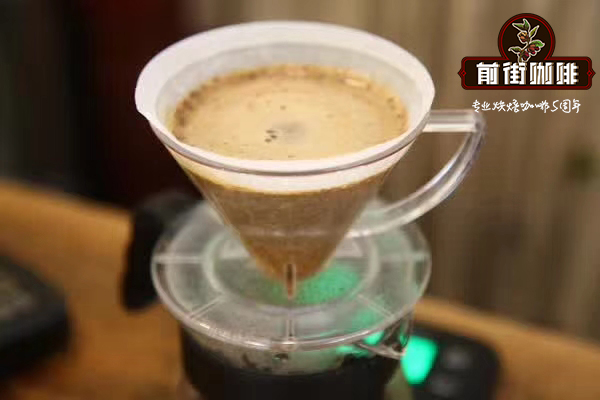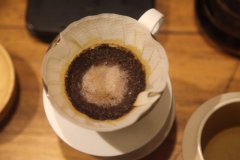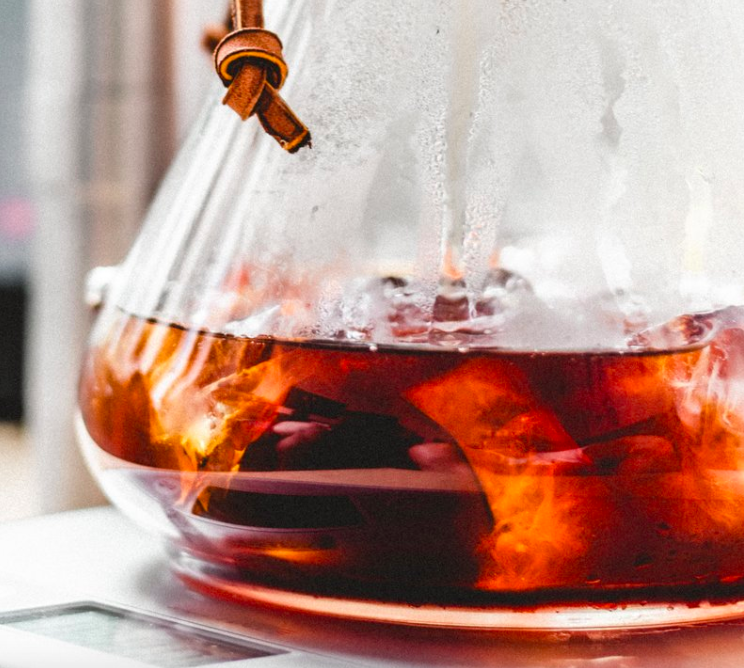Is it important to extract espresso powder? Does it have a great influence on the extraction of coffee liquid?
The thickness of the powder controls the speed at which water passes through the coffee powder, and when the thickness of the powder is the same, different states of the powder layer will produce different passing speeds.
The action of beating powder, beating powder will make the fine powder sink, and the distribution of coffee powder will be more hierarchical, coarse at the top and thin at the bottom.
And knock too much, even if the same thickness, the flow rate will become slower, fine powder accumulates at the bottom, the resistance becomes greater.
And the strength of the powder is a factor that determines that the water stays and then the coffee powder is of the same thickness. It does not determine the overall flow rate.
This is not easy to understand.
According to common sense, the greater the pressure, the stronger the pressure.
The actual coffee beans are naturally distributed and pressed after grinding, and the structure of the powder layer is not changed. Can only change the surface state of coffee powder.
Then why press it? Here I say that the extraction of espresso cannot be uniform. Because the water will always find a place with relatively little resistance to go down.
At present, no bean grinder is absolutely uniform, all relatively uniform.
Therefore, to press this action is actually to let her stay longer on the surface, so that the surface resistance is close to the same, so that the coffee can be extracted more evenly.
Rotating when pressing powder can change the structure of the powder layer.
It can make the powder stick together more closely to improve the water resistance of the coffee powder layer.
The beans are ground to Italian thickness, and the appearance of the powder is more irregular. Give it a rotating drive on the surface, and the powder that fits each other will get stuck in one place, resulting in increased resistance to water, making it more uniform when it passes through coffee.
So, do you think pressing powder is useful? I say it is useful to increase the time for the water to stay on the surface of the coffee.
But please think of this as a variable.
Baristas all know that when using an espresso machine, the hot water brewed has about 9 atmospheric pressure (of course, this is not a fixed value, there are 12 atmospheric pressure or higher), and the pressure is very high, when the water penetrates the coffee cake. the water is inert. What is inertia, that is, water will penetrate through the weakest part of the coffee cake, not from the thickest place.
Therefore, if you do not use a coffee powder press to compact and flatten the coffee (to make the density of the coffee powder in the powder bowl as uniform as possible), the essence of the coffee will not be extracted, or some parts will be overextracted.

Important Notice :
前街咖啡 FrontStreet Coffee has moved to new addredd:
FrontStreet Coffee Address: 315,Donghua East Road,GuangZhou
Tel:020 38364473
- Prev

The key factor affecting the brewing of hand-brewed coffee-time_brewing time how much is better
Professional coffee knowledge exchange More coffee bean information Please pay attention to coffee workshop (Weixin Official Accounts cafe_style) in recent hand-washed courses Students are lovely and studious, based on the universality of questions, here to share with you one of our most frequently asked extraction time in class!! When brewing, we can imagine coffee, there are fat and thin coffee powder.
- Next

Hand-made iced coffee theory _ it takes only three steps to make a good cup of "iced coffee"
Professional coffee knowledge exchange more coffee bean information please follow the coffee workshop (Wechat official account cafe_style) Hot Summer is the best time to have a cup of cold iced coffee, today the editor is here to teach you to make a cup of iced coffee by hand! Before we begin, let's briefly understand the principle: | hand-made iced coffee theory | because iced coffee needs to be added.
Related
- Beginners will see the "Coffee pull flower" guide!
- What is the difference between ice blog purified milk and ordinary milk coffee?
- Why is the Philippines the largest producer of crops in Liberia?
- For coffee extraction, should the fine powder be retained?
- How does extracted espresso fill pressed powder? How much strength does it take to press the powder?
- How to make jasmine cold extract coffee? Is the jasmine + latte good?
- Will this little toy really make the coffee taste better? How does Lily Drip affect coffee extraction?
- Will the action of slapping the filter cup also affect coffee extraction?
- What's the difference between powder-to-water ratio and powder-to-liquid ratio?
- What is the Ethiopian local species? What does it have to do with Heirloom native species?

